Related Research Articles

Grant DeVolson Wood was an American painter and representative of Regionalism, best known for his paintings depicting the rural American Midwest. He is particularly well known for American Gothic (1930), which has become an iconic example of early 20th-century American art.

Thomas Hart Benton was an American painter, muralist, and printmaker. Along with Grant Wood and John Steuart Curry, he was at the forefront of the Regionalist art movement. The fluid, sculpted figures in his paintings showed everyday people in scenes of life in the United States.
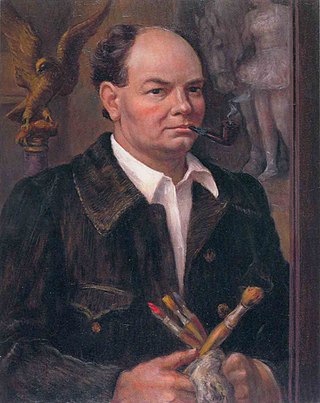
John Steuart Curry was an American painter whose career spanned the years from 1924 until his death. He was noted for his paintings depicting rural life in his home state, Kansas. Along with Thomas Hart Benton and Grant Wood, he was hailed as one of the three great painters of American Regionalism of the first half of the twentieth century. Curry's artistic production was varied, including paintings, book illustrations, prints, and posters.

Lee Wiley was an American jazz singer during the 1930s, 1940s, and 1950s.

James Rowland Angell was an American psychologist and educator who served as the 16th President of Yale University between 1921 and 1937. His father, James Burrill Angell (1829–1916), was president of the University of Vermont from 1866 to 1871 and then the University of Michigan from 1871 to 1909.

The Kansas City Art Institute (KCAI) is a private art school in Kansas City, Missouri. The college was founded in 1885 and is an accredited by the National Association of Schools of Art and Design and Higher Learning Commission. The institute has approximately 75 faculty members and 700 students, and offers a Bachelor of Fine Arts degree.
This Is Your FBI is a radio crime drama broadcast in the United States on ABC from April 6, 1945, to January 30, 1953, for a total of 409 shows. FBI chief J. Edgar Hoover gave it his endorsement, calling it "the finest dramatic program on the air". Dramatizations of FBI cases were narrated by Frank Lovejoy, Dean Carleton and William Woodson. Lawrence MacArthur wrote the episodes. This Is Your FBI was sponsored during its entire run by the Equitable Life Assurance Society of the United States.
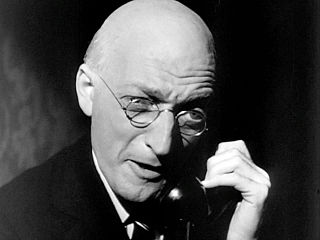
Everett H. Sloane was an American character actor who worked in radio, theatre, films, and television.
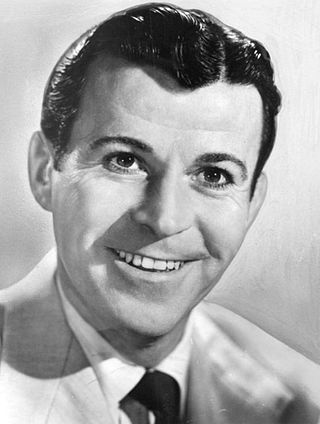
Dennis Day was an American actor, comedian and singer. He was of Irish descent.

The Paley Center for Media, formerly the Museum of Television & Radio (MT&R) and the Museum of Broadcasting, founded in 1975 by William S. Paley, is an American cultural institution in New York with a branch office in Los Angeles, dedicated to the discussion of the cultural, creative, and social significance of television, radio, and emerging platforms for the professional community and media-interested public.

John Nicholas "Dick" Foran was an American actor and singer, known for his performances in Western musicals and for playing supporting roles in dramatic pictures. He appeared in dozens of movies of every type during his lengthy career, often with top stars leading the cast.
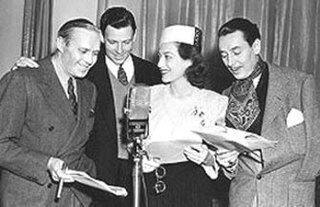
The Screen Guild Theater is a radio anthology series broadcast from 1939 until 1952 during the Golden Age of Radio. Leading Hollywood stars performed adaptations of popular motion pictures. Originating on CBS Radio, it aired under several different titles including The Gulf Screen Guild Show, The Gulf Screen Guild Theater, The Lady Esther Screen Guild Theater and The Camel Screen Guild Players. Fees that would ordinarily have been paid to the stars and studios were instead donated to the Motion Picture Relief Fund, and were used for the construction and maintenance of the Motion Picture Country House.

Marguerite Munger Peet (1903–1995) was an American painter. She did not have a far-reaching artistic reputation during her lifetime as she did not often exhibit her work in public. Her family found over 430 of her paintings after her death, and she has been the subject of three major retrospectives in the last 15 years. Her most significant work was created under the tutelage of famed American Regionalist painter Thomas Hart Benton.

Ernest Clifford Peixotto (1869–1940) was an American artist, illustrator, and author. Although he was known mainly for his murals and his travel literature, his artwork also regularly appeared in Scribner's Magazine. His 1916 work Our Hispanic Southwest is famous for including the first written appearance of the ethnic slur "spic".

Big Sister was a daytime radio drama series created by Lillian Lauferty and broadcast on CBS from September 14, 1936, to December 26, 1952. It was sponsored by Lever Brothers for Rinso until 1946 when Procter & Gamble became the sponsor.
Gang Busters is an American dramatic radio program heralded as "the only national program that brings you authentic police case histories." It premiered on January 15, 1936, and was broadcast over 21 years through November 27, 1957.
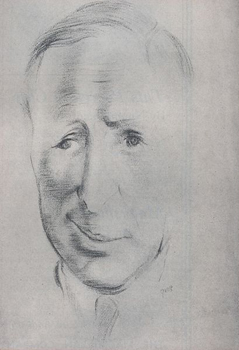
Thomas Craven was an American author, critic and lecturer, who promoted the work of American Regionalist painters, Thomas Hart Benton, John Steuart Curry and Grant Wood, among others. He was known for his caustic comments and being the "leading decrier of the School of Paris."
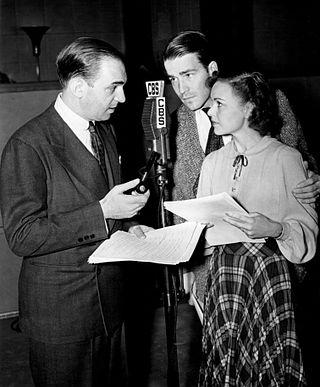
The Adventures of Ellery Queen was a radio detective program in the United States. Several iterations of the program appeared on different networks, with the first one broadcast on CBS on June 18, 1939, and the last on ABC on May 27, 1948.
Persephone is a 1939 painting by the American painter Thomas Hart Benton. It depicts the Greek goddess Persephone, resting nude by a tree in a rural Midwestern setting. Benton, dressed in farmer's clothes, plays the role of Pluto and peeks from behind the tree.

James Duard Marshall was a painter, lithographer, museum director, and art conservator who lived most of his life in Kansas City. Duard [pronounced "doo-erd"] was a student of Thomas Hart Benton and is best known for his 30-foot mural created for the centennial of Neosho, Missouri in 1939. The civic leaders of Neosho had approached Benton to produce the mural, as Benton had been born in Neosho, but he suggested that his student Marshall do the job. That mural hangs in the Neosho Newton County Library.
References
- 1 2 3 "Art Group Formed to Educate Public: It WiII Give Scholarships and Help Sponsor Radio Series" . The New York Times. October 7, 1939. p. 22. Retrieved December 12, 2023.
- 1 2 3 4 5 6 7 Dunning, John (May 7, 1998). On the Air: The Encyclopedia of Old-Time Radio. Oxford University Press. pp. 42–43. ISBN 978-0-19-984045-8 . Retrieved December 12, 2023.
- 1 2 3 4 5 6 Mazow, Leo G.; Benton, Thomas Hart (2012). Thomas Hart Benton and the American Sound. Penn State Press. pp. 123–124. ISBN 978-0-271-05083-6 . Retrieved December 12, 2023.
- ↑ Morgan, Stacy I. (April 18, 2017). Frankie and Johnny: Race, Gender, and the Work of African American Folklore in 1930s America. University of Texas Press. p. 85. ISBN 978-1-4773-1210-0 . Retrieved December 13, 2023.
- ↑ "Radio Programs". Wisconsin Library Bulletin. January 1940. p. 5. Retrieved December 13, 2023.
- ↑ FM for Education. U. S. Office of Education. pp. 9–10. Retrieved December 13, 2023.
- ↑ "Notes on Television" . The New York Times. February 4, 1940. p. 128. ProQuest 105155893 . Retrieved December 13, 2023.
- ↑ "Radio Programs". The Tampa Tribune. October 7, 1939. p. 12. Retrieved December 14, 2023– via Newspapers.com.
- 1 2 "NBC Launches Appreciation Series As New Feature". The Altoona Tribune. October 6, 1939. p. 19. Retrieved December 14, 2023– via Newspapers.com.
- ↑ "Art". The Cincinnati Post. December 30, 1939. p. 11. Retrieved December 15, 2023– via Newspapers.com.
- ↑ "Museum Increases Space for Visitors" . The New York Times. January 13, 1940. p. 18. Retrieved December 13, 2023.